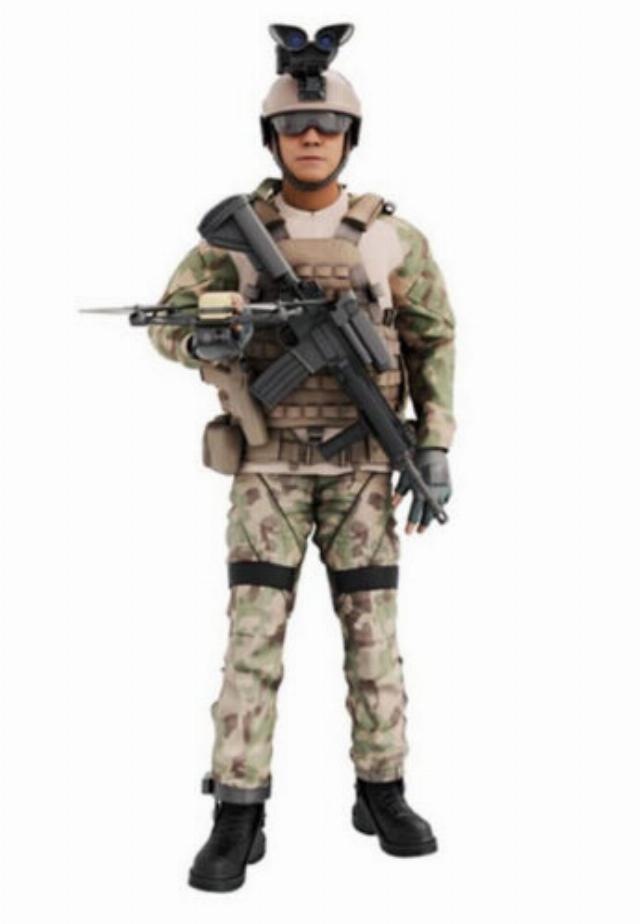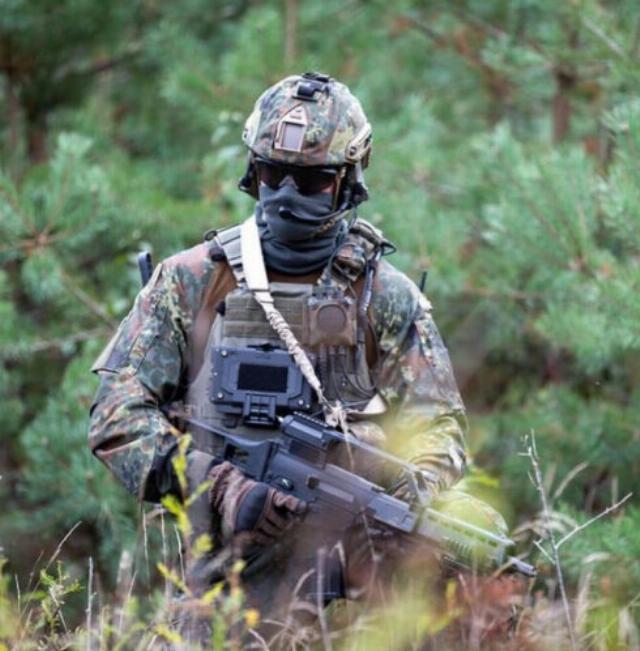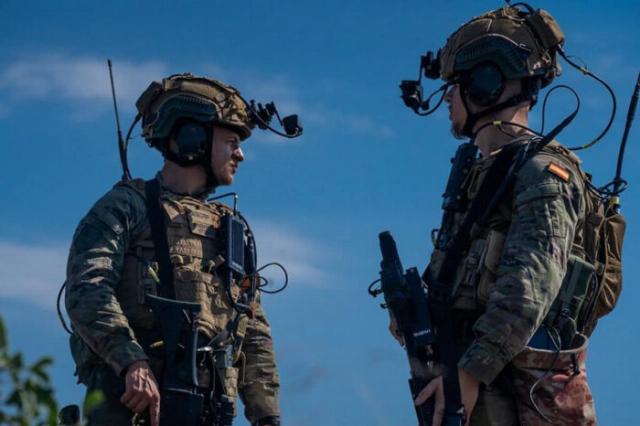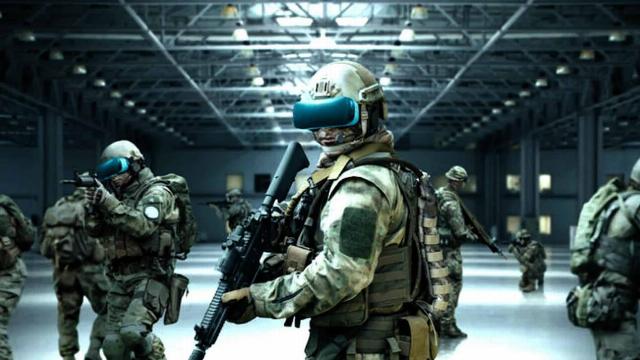We continue to consider the development of systems such as the "Soldier of the Future", which began in the first part .
European-designed "Soldier of the Future" systems
The Akhil Program
In June 2023, the European Union launched the Enhanced Capability for High-end Soldiers (ACHILE) program and received a grant of 40 million euros from the European Commission.
Akhil has been one of the priority defense projects supported by the European Defense Fund (EOA) since 2021. According to the EA, the goal is to develop "innovative solutions for the next generation foot soldier system by identifying, designing, and demonstrating the benefits of GOSSRA-based open system architecture and promising breakthrough technologies that enhance survival, resilience, mobility, lethality, and observability." GOSSRA is a common reference architecture for an open system for soldiers, another EU defense initiative launched in 2018.
The Achil program is designed for 48 months, during which it will go through successive stages of agreeing on operational concepts, defining user and system requirements at the European level, as well as demonstrating full-size prototypes in real-world conditions and during large-scale demonstrations. The program involves a wide consortium of industry partners from nine EU countries, as well as from Norway. Ensuring compatibility between allies is one of the main objectives of the program. Safran Electronics and Defense company acts as the coordinator of the program.
The development paths are divided into four main areas: "Soldier Core" and "Soldier Extension" are aimed at developing individual capabilities of military personnel, and "Team Core" and "Team Extension" are aimed at squad–level functionality, network interaction, robotics, and interaction with advanced weapons systems. It is believed that such a segmented approach makes it possible to simultaneously improve both individual protection and collective coordination.
Technologies being developed to enhance the individual capabilities of soldiers include:
- Augmented reality (AR) systems that provide soldiers with real-time battlefield data such as navigation signals, threat warnings, and tactical maps overlaid in the soldier's field of vision.;
- more reliable navigation systems, in addition to traditional GPS, integrating multiple tracking and sensing technologies to ensure more accurate localization;
- Next-generation weapon sights to improve target accuracy and accelerate combat processes (intelligent systems capable of interacting with other soldier equipment to provide a synchronized operational picture, reducing the time required to detect a target), as well as reducing the size, weight and power (replacement) requirements for personal equipment.
In addition, to reduce physical exertion while providing reliable protection and functionality, work is underway to improve the ergonomics of the equipment. Companies belonging to the consortium, such as the Spanish Cyber Human Systems, are developing advanced combat exoskeletons designed to expand the physical capabilities of soldiers by reducing fatigue and increasing load-bearing capacity.
The expanded team capabilities implemented within the framework of the Akhil project include network communication and robotics integration. The first provides real-time data exchange between soldiers and command elements, creating an overall operational picture, improving coordination during maneuvers and reducing response time. The second implements auxiliary functions, such as transporting the unit's equipment or providing autonomous support during maneuvers.
French soldier of the future - "CENTURION"
At the turn of 2010-2015, France implemented the Infantryman with Integrated Equipment and Communications (Fantassin à Équipement et Liaisons Intégrés, FELIN) program, which increased situational awareness and combat capability, as well as reduced the burden on soldiers. The modular system, which could be customized to a specific task, included improved communication equipment and sensors, infantry weapons and advanced sighting devices, ballistic protection, ergonomic uniforms and unloading systems.
In 2015, Safran Electronics and Defense received a contract from Paris to upgrade FELIN to V1.3. Deliveries to advanced units began in 2016. The upgrade included software improvements to support snipers and mortars, as well as equipment configuration changes to improve surveillance and combat functions while reducing the weight of the system by up to 40% under certain conditions.

The concept of the French soldier of the future in the framework of the CENTURION program
The next stage of the modernization of the French army infantry will be the program "Framework for the study of new technologies and new ways of their application for rapid integration into combat operations" (Cadre d'études de Nouvelles Technologies et nouveaux Usages pour une Rapide IntégratiON au combatant, CENTURION), which is led by Safran in partnership with Thales.
This seven-year program, initiated at the end of 2019 by the General Directorate of Armaments (DGA) under the Government of France, is an innovation accelerator for bringing individual technologies to the level of a fully functional sample on a pilot production line (TRL6).
The process began with open requests to technology vendors asking them to offer solutions that meet operational needs. The proposals are evaluated by the scientific and technical committee, which includes representatives of the DGA, the Defense Innovation Agency (AID) and the armed Forces. Promising projects receive targeted support and funding for rapid development and testing, which facilitates system integration.
The stated goals of the program are to increase the mobility, agility, survival, and combat capability of soldiers. Centurion is based on the principles of open architecture, including GOSSRA, which facilitates the rapid integration of new technologies. The system is designed to increase infantry readiness for multi-domain operations by integrating them into the network ecosystem of ground combat operations. It is assumed that joint combat operations will allow personnel to understand, make decisions and act faster than the enemy.
Key features: advanced network communication systems for real-time data exchange; improved protection and mobility thanks to lightweight ballistic armor and ergonomic transportation systems; integration of artificial intelligence for tactical operations and decision-making; next-generation night vision, thermal imaging and target detection sensors; reduced power consumption; modular equipment, configurable according to requirements missions. The Centurion Soldier of the future system uses new materials and microtechnologies to create lightweight but durable components.
About 25 individual projects are being implemented under the program, but as of mid-2025, none of them have been put into production, despite ongoing operational tests and demonstrations. Some technologies have reached the 6th level of technological readiness (TRL-6).
The graphs and videos released by the French Ministry of Defense show the gradual improvement in protection, mobility and firepower of soldiers under the Centurion program, as well as new improvements that will be implemented in the 2020s and beyond. These improvements will eventually be implemented into the Scorpion Landed combat information system (SICS DEB), which will ensure full operational integration of dismounted infantry with armored platforms such as Griffon and Jaguar, procured under the Scorpion program .
Germany: "infantry of the future"
Germany is implementing one of the most notable "infantry of the future" programs to improve both light and mechanized units. The first Infantryman of the Future (Infanterist der Zukunft, IdZ) program was launched in 2004 and implemented using ready-made commercial systems (COTS).
The subsequent IdZ-ES (Erweitertes System; extended System ) Gladius program was developed from scratch and began shipping in 2013 in an amount of 6,600 sets. IdZ consists of three subgroups: BST (Bekleidung, Schutz- und Trageausstattung – clothing, protective and load-bearing equipment), WOO (weapons, optics and optoelectronics) and C4I (command, control, computers, communications and information). The modular system allows you to assemble equipment for specific tasks from the components of each subgroup. Thus, soldiers and units can choose from about 80 individual components.
The IdZ-ES is based on vest-worn communication and networking equipment, including the CeoTronics CT-MultiPTT 3C USB hub (which connects electronic communication devices, data transmission and sensors to provide a cross-platform interface), tactical radios, digital navigation devices, several conformal batteries, as well as a manual control unit and visual display and communication headset. Squad and platoon commanders are additionally equipped with a secure tablet computer.

The IdZ-ES equipment provides access to communication, data transmission, and situational awareness systems via the chest interface.
According to the definition of the Bundeswehr, the C4I component of the system unites dismounted infantry into a single network structure of operational command. Military personnel at the platoon level interact with each other, and the commanders of small units communicate with higher echelons. This allows small units and individual soldiers to receive up-to-date information about the tactical situation and the current state of forces in battle. Tactical decisions are made faster and based on more complete information. Increases lethality, survival, agility, and endurance.
The IdZ system continues to improve. In 2021, deliveries of the VJTF 2023 variant began, designed to meet the specific needs of the German contingent leading the NATO Joint High-Readiness Task Force (VJTF) in 2023. In this variant, special attention is paid to updating command, control, communications, situational awareness and network technologies to the latest level, as well as integrating dismounted infantry with infantry fighting vehicles for optimal coordination of operations. Along with the modernization of electronics and communications equipment on the Puma infantry fighting vehicle and other armored combat vehicles, VTJF 2023 is also the basis for the Panzergrenadier system, which fully integrates the sensors and armament of the vehicle with sensors and armament of motorized infantry.
In February 2025, Rheinmetall received a contract for further modernization of the IdZ-ES based on the VJTF 2023 configuration. According to Rheinmetall representatives, this new VJTF 2023 design, taking into account obsolescence, lacks all technically obsolete components. In addition, it "implements communication and data exchange capabilities with Boxer armored personnel carriers and Puma infantry fighting vehicles, and also provides training" for the new Caracal airborne troops. In addition, the updated basic hardware of soldiers' systems is also designed to integrate with the integrated digital information and communication network (Digitalisierung Landbasierter Operationen, D-LBO). By 2030, this ground operations digitalization system is expected to integrate 10,000 tactical vehicles and platforms, as well as sensors. The D-LBO will optimize the German Armed Forces for conducting combat operations in a digital environment and improve interaction with allied forces on the digital battlefield.
The framework contract, signed in February 2025, has a value of 3.1 billion. euro and is calculated until 2030. It provides for the purchase of up to 368 platoon sets. The contract includes the modernization of 68 platoon systems in service to the digital standard, as well as the production of 300 equivalent units conforming to the new standard. The platoon system consists of 34 individual systems for soldiers, as well as peripheral components, including IT equipment, optics, optoelectronics, clothing, protective equipment and carriers.
Spain: SISCAP
In turn, Spain launched a "Foot combat System" (Sistema de Combatiente a Pie, SISCAP) in 2017. The goal is to prepare infantry to participate in the comprehensive army modernization program "Force 35" (Fuerza 35), which will allow ground forces to freely maneuver and fight in the so–called "digital theaters of operations" in a network of systems adapted to the new combat cloud.
The program is managed by the General Directorate of Armaments and Logistics of the Spanish Ministry of Defense (DGAM). In 2017, Indra Sistemas, S.A. and GMV Innovating Solutions, S.L. joined forces to develop and demonstrate SISCAP. In June 2024, soldiers of the elite Spanish Legion conducted an in-depth operational assessment of the system.
According to GMV, this successful demonstration completed phase 1-b of the program and moved SISCAP to the consolidation phase, during which new components and features are being added. In the future, it is planned to produce seven prototypes in the platoon commander configuration, and then provide 40-50 pre-production kits in an operational configuration for evaluation in real conditions. Indra predicts that mass production could begin by 2030.

Spanish Infantrymen with an experienced SISCAP kit
According to GMV, the SISCAP program is divided into seven subsystems: weapons and ammunition; fire efficiency; information and communications; maintenance; survivability; energy supply; readiness (training).
The first two phases of the program were devoted to fire efficiency, information and communication systems, as well as energy supply, which are considered the most important aspects. Key components include augmented reality optics mounted on the helmet to provide situational awareness, guidance data, tracking of "blue" and "red" forces, as well as the ability to wirelessly view images from the sight; optical and thermal imaging cameras; network digital radios for voice and data transmission; a tablet connected to the control system. fighting (platoon commander).
The equipment worn by the soldier can be integrated with the Dragon 8x8 infantry fighting vehicle, which will serve as a communications hub between the unit and the tactical combat control center.
To be continued…
Source: euro-sd.com

